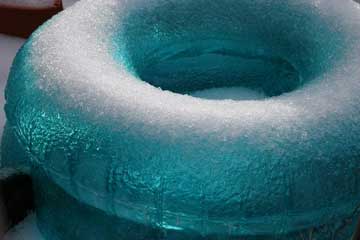 by Preston MacDougall August 28, 2006
If you are wondering why the geek sitting next to you is laughing, you have to understand hexadecimal numbers to get the joke. You see, unlike the decimal system, which uses 10 digits (0 thru 9) to represent numbers, the hexadecimal system that is used in machine language represents numbers with the 16 digits 0 thru F.
Let me give you an example. If a slot machine, which naturally thinks in machine language, were to imagine itself as a human one-armed bandit, it would have F fingers and toes in all. And so, just like 9 plus 1 is 10 for us, F plus 1 is 10 for it. Now do you get it? OK, for those who missed out on the first joke, let's try another one that I read in a math magazine with a gorgeous computer on the cover: There are 10 kinds of people, those who understand the binary system, and those who don't. If you didn't get that one either, and the geek is now laughing at you too - I'm sorry if I embarrassed you. (1 plus 1 is 10 in the binary system, which uses just zeros and ones to represent numbers.) At this point in my commentary, if the mathematical jokes have only managed to frustrate you, don't blame me - I'm a chemistry geek - blame a mathematician. (For any math geeks who are reading this, that was a joke too.) However, it does bring me to some recent news, the awarding of four Fields Medals at the 2006 International Congress of Mathematicians in Madrid, only three of which were accepted. Fields Medals are considered the Nobel Prizes of Mathematics and have been awarded, since 1936, to mathematicians under the age of forty "in recognition of work already done" and "to be an encouragement for further achievement". The medals are named after Canadian mathematician John Charles Fields (1863 -1932), who is buried in Cootes Paradise, a nature preserve adjacent to the campus of McMaster University. McMaster is located in Hamilton, Ontario, where Fields was born, and where I learned, among other things, how to use computers to study the topology of molecules. Fields was a longtime professor of mathematics at the University of Toronto, where he organized the first International Congress, in 1924. As stipulated in his will, the medals should "each contain at least 200 dollars of gold and be of a fair size, probably 7.5 centimeters in diameter." With the price of gold in 2006, the Fields Medal is worth lots o' loonies, but is still a far cry from the million dollar-plus booty that came with the Nobels this year (which are also made of gold). There has been some noise in the mathematics community in Canada, requesting that the federal Government augment the Fields Medal with "an appropriate level of funding". I can't think of anything that would be more inappropriate, mathematically. You see, it is believed that the Fields Medals were conceived, at least partly, in response to the obvious omission of mathematics from the will of Alfred Nobel. It is well known that the Swedish mathematician Gösta Mittag-Leffler had a less than cordial relationship with Alfred Nobel. Perhaps Gösta didn't know when to stop with the math jokes. In any case, Mittag-Leffler was a life-long friend of Professor Fields, so the purely golden nature of the Fields Medals (without a stack of paper money made from dead trees) may be part of an inside joke. Who's to tell? The theory that a large cash prize would somehow elevate the status of the Fields Medals is something of a joke itself among some mathematicians. Grigory Perelman is a perfect example. Perelman is the reclusive Russian mathematician who declined to attend the Madrid ceremony, where he was awarded a Fields Medal in absentia. He is also entitled to a $1 million prize offered by the Clay Mathematics Institute in Cambridge, Mass., for proving what is called the Poincaré conjecture. (This achievement is the "work already done" for which he was awarded the Fields Medal). In Perelman's own words, he "wants no part" of the monetary award. The Poincaré conjecture refers to a theorem about the topological properties of three-dimensional objects, such as molecules and doughnuts. In essence, it says that you can turn a rubber doughnut into a coffee cup, but not a muffin, at least not without tearing it. As distasteful as it sounds, the presence of the hole makes all the difference. You could say that the hole is greater than the sum of all bends but not a single part.
On the Web:
Publish A Letter on SitNews Read Letters/Opinions Submit A Letter to the Editor
|
||
